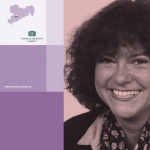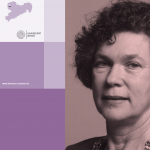
Academy graduate and successful artist
Irene Rüther-Rabinowicz
In the early-20th century, art was a man’s affair. In 1919, Irene Rabinowicz became one of the first women to be enrolled at Dresden State Art Academy. Persecuted by the Nazis for her Jewish roots, after 1945 she became one of the most esteemed artists in East Germany. Irene Rabinowicz was born into a well-to-do Polish-Jewish family. Her artistic talent was nurtured when she was still a young girl. After moving with her family to Dresden, she continued attending private art classes. Her application to Dresden State Art Academy dated 29 September 1919 contained 20 drawings. Several associations of female artists had already campaigned since 1906 in vain for women to be admitted to Dresden State Art Academy.
Only at the start of the 1919 winter semester were three women enrolled, one of them being Irene Rabinowicz. Her prominent fellowstudents included Otto Dix, Peter August Böckstiegel, Otto Griebel and Hubert Rüther, whom she married in 1921. After graduating, Irene Rüther-Rabinowicz became a freelance artist and painted portraits of many of her colleagues. When the Nazis came to power, this marked the start of a period of persecution for Irene RütherRabinowicz lasting several years. Being a ‘half-Jew’, she was no longer allowed to practise her profession from 1934. Her husband was also banned from working because he refused to divorce his wife. In 1943, Irene was forced to work in a cardboard factory. Her planned deportation to Theresienstadt concentration camp was only prevented by the air raid on Dresden on 13 February 1945. Although her husband did not survive the torture of persecution, Rüther-Rabinowicz was able to continue her artistic career after the war. In December 1945, her paintings were displayed at Dresden State Art Academy alongside works by other famous artists from the city such as Josef Hegenbarth, Wilhelm Rudolph and Eva Schule-Knabe in the exhibition ‘Free Artists’. Her talent was subsequently displayed at many other exhibitions in East Germany. Irene Rüther-Rabinowicz died in Dresden in 1979.
Fotonachweis: Gemälde Blutblume: bpk / Staatliche Kunstsammlungen Dresden, Elke Estel / Hans-Peter Klut (1); SLUB / Deutsche Fotothek, Li Naewiger (3); Städtische Sammlungen Freital (2)
Renate Lieckfeldt 1965–2013 “Higher education means passion!” declared Renate Lieckfeldt ardently at the start…
Ausstellungseröffnung #herstory – Sachsen und seine Akademikerinnen Im Tietz der Stadt…
Marketing researcher and first woman at the helm of a university Cornelia Zanger Cornelia Zanger…
Physician and first female rector Beate A. Schücking After a long career in…







